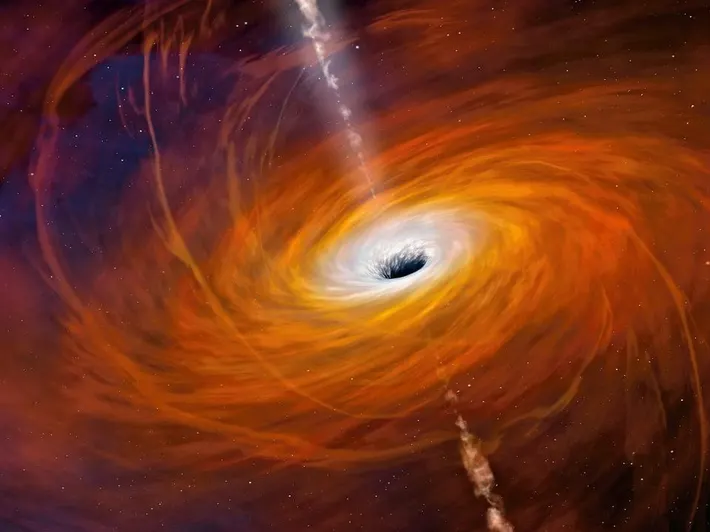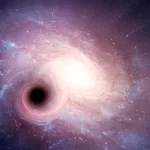Key Takeaways:
- X-ray Revelation: Researchers utilize X-rays to unveil the rotational speed of a black hole, offering unprecedented insights into these cosmic enigmas.
- Stellar Shredding: Witnessing a tidal disruption flare, astronomers observe a black hole tear apart a passing star, emitting powerful X-ray radiation detectable from Earth.
- Dual Dynamics: Peculiar bursts of X-rays near the black hole’s event horizon suggest the involvement of two stars, enhancing our understanding of celestial interactions.
- Half the Speed of Light: Calculations reveal that the black hole rotates at nearly half the speed of light, marking a milestone in our ability to gauge the velocities of supermassive black holes.
- Rare Phenomena: While such events emit X-rays for a limited duration, researchers aim to explore more flare events to discern patterns in the evolution of black holes over time.
Explorers have harnessed the power of X-rays to ascertain the velocity at which a black hole rotates, potentially unraveling the mysteries surrounding the aging process of these cosmic phenomena.
Black holes, colossal entities that obliterate anything that ventures into their gravitational grasp, remain enigmatic to us. However, astronomers have devised a novel approach to scrutinize their enigmatic behaviors.
By scrutinizing the X-rays emitted from a star subjected to the gravitational pull of a black hole, a consortium of researchers managed to determine the rotational velocity of the black hole, registering it at nearly half the speed of light. This groundbreaking achievement marks the inaugural instance where astronomers have employed X-rays, orbiting the black hole every 131 seconds, to compute its staggering velocity. The findings of this research, which could potentially establish a correlation between a black hole’s age and its rotational speed, have been disseminated in the prestigious journal Science.
Celestial Annihilation The genesis of this revelation traces back to November 2014, when astronomers observed a galaxy situated 300 million light-years away from Earth. Within this distant realm, they bore witness to the central, supermassive black hole ensnaring and disintegrating a passing star, resulting in what is known as a tidal disruption flare. This cataclysmic event precipitated a torrent of X-ray emissions detectable from Earth. Given the scarcity of X-ray emissions originating directly from black holes, a cohort of researchers seized upon this opportunity to delve deeper into the phenomenon.
Fortuitously, an array of space telescopes commenced monitoring the black hole’s X-ray emissions subsequent to the detection of the flare. Upon meticulous scrutiny of the amassed data, the team spearheaded by MIT discerned a discernible pattern. They observed that bursts of X-rays materialized at intervals of 131 seconds in proximity to the black hole’s event horizon—the boundary beyond which gravitational forces become insurmountable. These periodic emissions endured for over 450 days, augmenting the aggregate X-ray emissions emanating from the black hole by 40%.
Daring Duo The prevailing conjecture posits that these formidable bursts of radiation stem from the interaction of two stars rather than a singular entity. The original observation from 2014 remains valid: a black hole ensnared a passing star, fragmenting it into fragments. While some of these stellar remnants, emitting copious amounts of X-ray radiation, succumbed to the black hole’s gravitational pull, others lingered within the innermost stable circular orbit (ISCO)—the closest point at which objects can orbit a black hole without succumbing to its gravitational pull.
Within this perilously close orbit resides another star, believed to be a diminutive yet dense white dwarf. Researchers hypothesize that the white dwarf’s gravitational influence ensnared the luminous stellar remnants, engendering a halo of X-rays around it. These X-rays become perceptible each time the star completes an orbit around the black hole, occurring once every 131 seconds.
By amalgamating the orbital velocity of the star with the black hole’s mass—estimated to be a million times more massive than the Sun—researchers deduced the rotational velocity of the black hole. According to their calculations, the black hole rotates at a velocity approaching half the speed of light.
“While this rotational velocity is not particularly exceptional—there exist black holes with rotational velocities estimated to approach 99% of the speed of light—this represents a pioneering endeavor employing tidal disruption flares to delimit the rotational velocities of supermassive black holes,” remarked Dheeraj Pasham, a postdoctoral researcher at MIT and the principal author of the study, in a press release.
These phenomena emit X-rays for a finite duration, typically spanning a few hundred years, rendering the likelihood of witnessing such events exceedingly rare. Nonetheless, the researchers are poised to explore additional flare events surrounding both nascent and antiquated black holes. By juxtaposing the rotational velocities of black holes at disparate stages of their lifecycle, researchers aspire to elucidate whether they intensify in velocity and potency over time. These insights could furnish invaluable revelations concerning their enigmatic metamorphoses and shed light on their predilection for consuming stars within a galaxy’s celestial expanse.



Knowing the rotational speed of a black hole should enable the diameter to be calculated, if you know the frequency of the rotation. Please can you also give us this data?